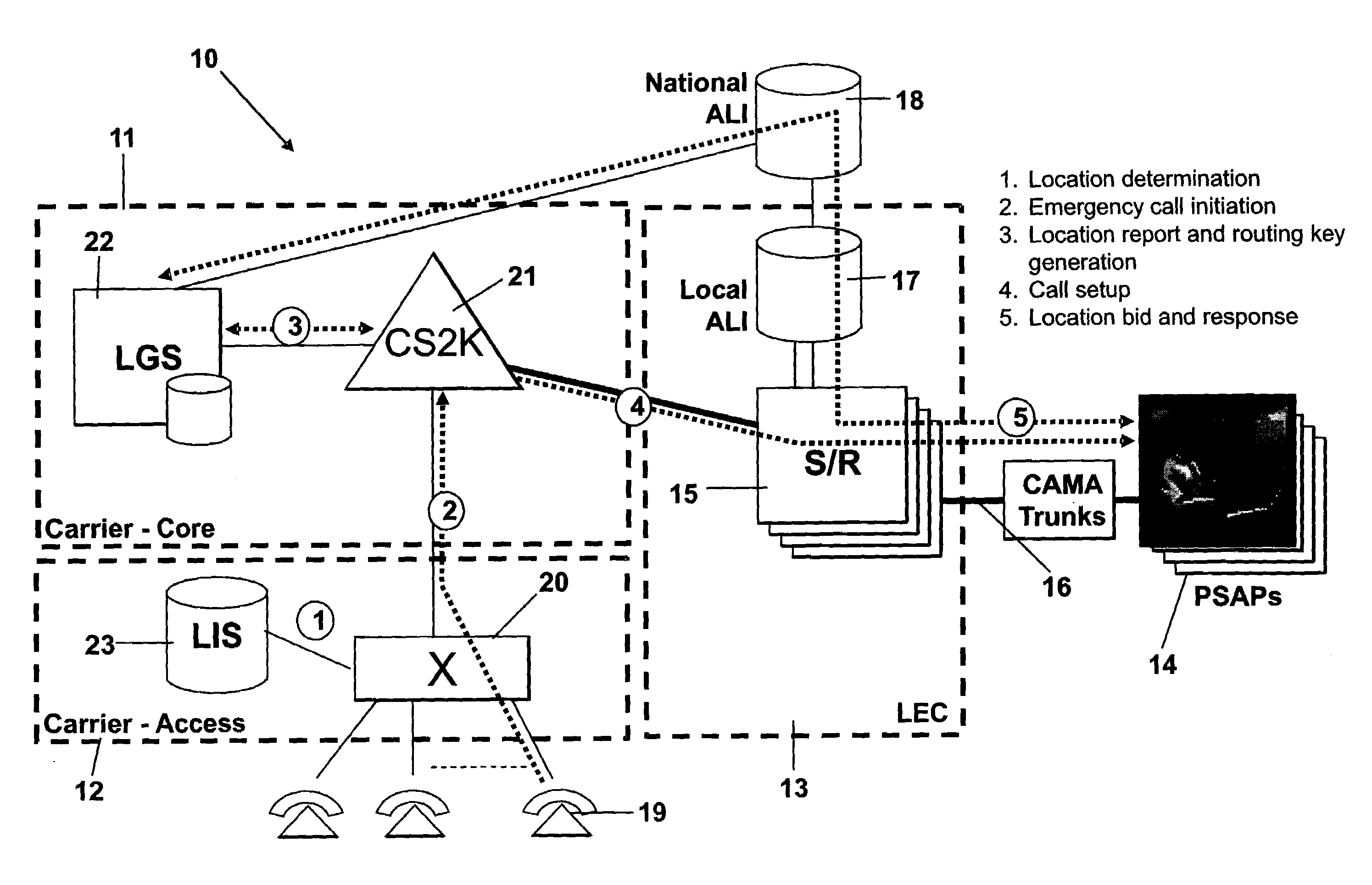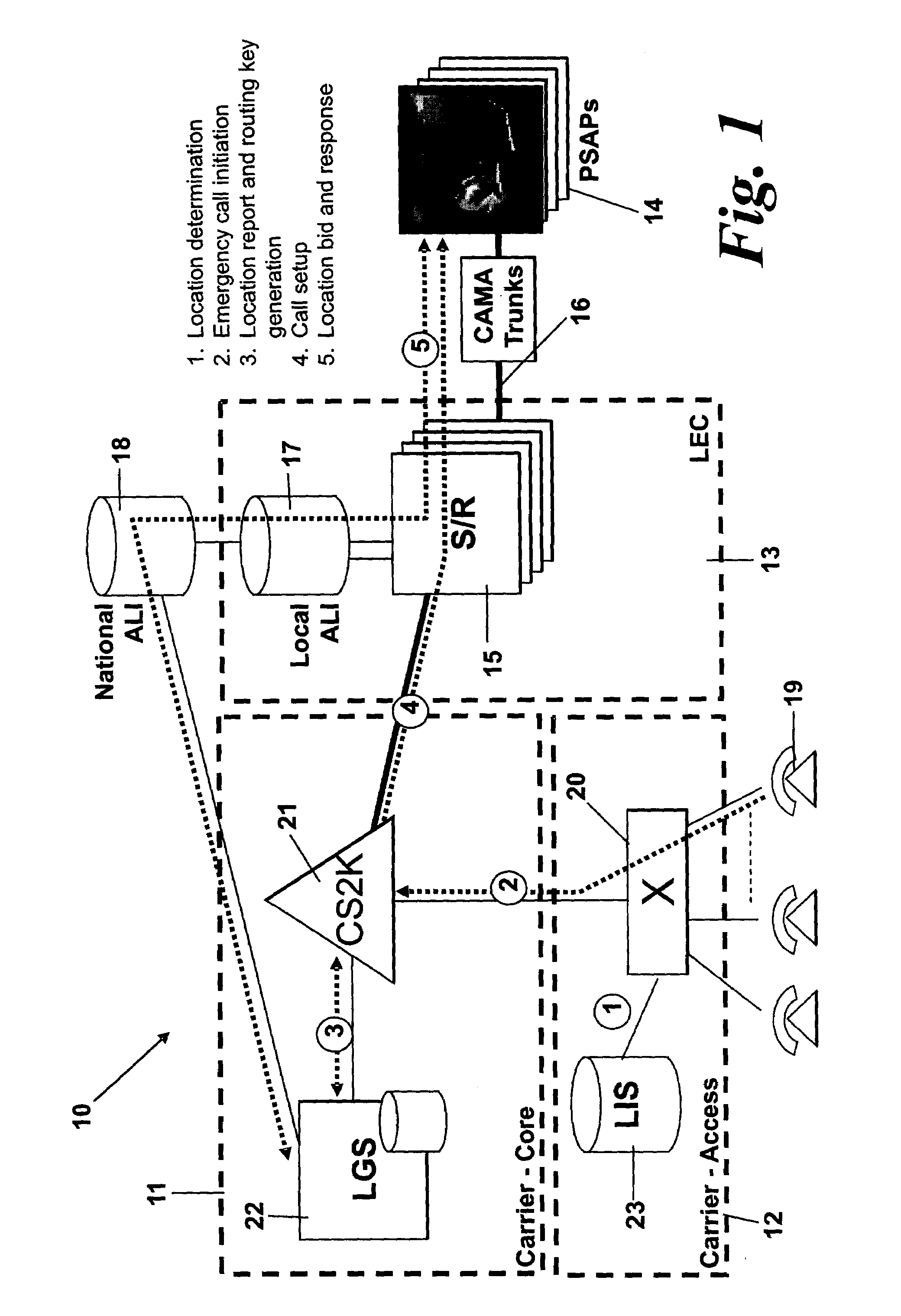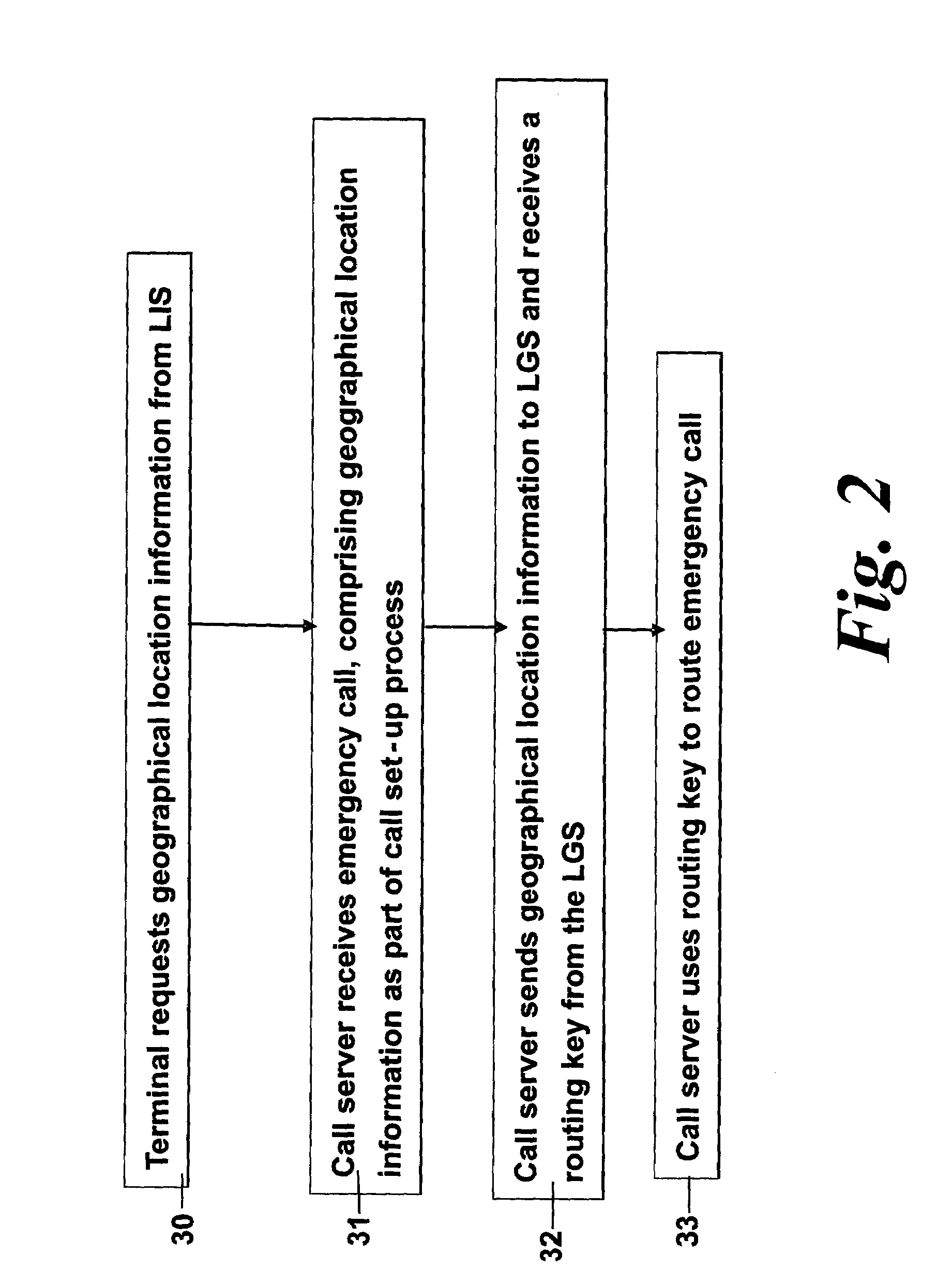Determining the geographical location from which an emergency call originates in a packet-based communications network
geographical location technology, applied in the field of determining the geographical location from which an emergency call originates in a packet-based communications network, can solve the problems of affecting reliability, unable to use static database entries, and cost in transferring calls, so as to reduce costs
- Summary
- Abstract
- Description
- Claims
- Application Information
AI Technical Summary
Benefits of technology
Problems solved by technology
Method used
Image
Examples
Embodiment Construction
[0053]Embodiments of the present invention are described below by way of example only. These examples represent the best ways of putting the invention into practice that are currently known to the Applicant although they are not the only ways in which this could be achieved.
[0054]The term “geographical location information” is used to refer to information about the physical position of an entity in the physical environment as opposed to a communications network address. For example, it comprises a civic address, postal address, street address, latitude and longitude information or geodetic location information.
[0055]The term “nomadic communications system” is used to refer to a communications network in which user terminals can access the network from different, geographically separated, network access points without the need for modification of the terminal in order to access the network from those different access points.
[0056]FIG. 1 is a schematic diagram of a packet-based commun...
PUM
 Login to View More
Login to View More Abstract
Description
Claims
Application Information
 Login to View More
Login to View More - R&D
- Intellectual Property
- Life Sciences
- Materials
- Tech Scout
- Unparalleled Data Quality
- Higher Quality Content
- 60% Fewer Hallucinations
Browse by: Latest US Patents, China's latest patents, Technical Efficacy Thesaurus, Application Domain, Technology Topic, Popular Technical Reports.
© 2025 PatSnap. All rights reserved.Legal|Privacy policy|Modern Slavery Act Transparency Statement|Sitemap|About US| Contact US: help@patsnap.com



